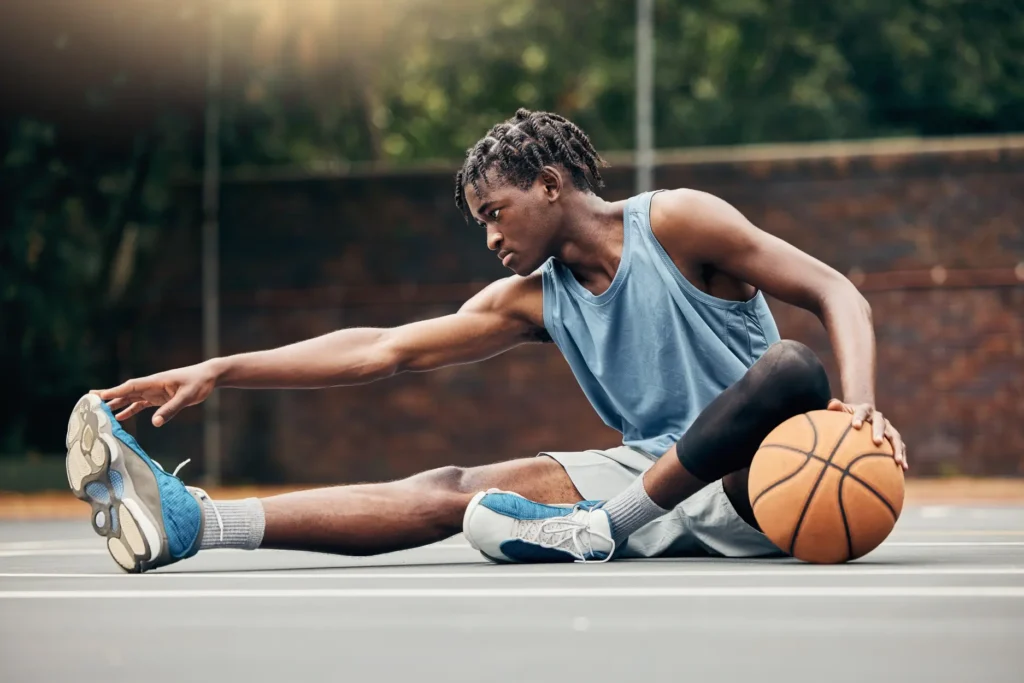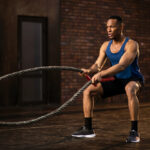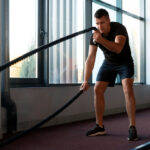Unlike static stretching, which involves holding a position, dynamic stretches involve movement. These stretches not only prepare the muscles and joints for the vigorous activities ahead but also enhance overall performance by improving flexibility and reducing the risk of injury. Incorporating dynamic stretches into pre-game or practice routines can significantly boost a player’s ability to perform at their peak. In this guide, we’ll explore essential dynamic stretches that every basketball player should integrate into their warm-up routine to stay game-ready and injury-free.
Upper body stretches
The upper body is crucial in basketball for shooting, passing, and rebounding. Dynamic stretches help warm up the arms, shoulders, and chest, increasing mobility and reducing the risk of strains.
Arm circles
Stand tall with your feet shoulder-width apart. Extend your arms parallel to the floor and rotate them in small circles, gradually increasing the diameter of the circles. Perform 10 circles in a forward motion and then 10 in reverse.
This simple exercise warms up the shoulder joints, preparing them for the extensive range of motion required in shooting and passing.
Cross-body shoulder stretch
While standing, bring one arm across your body at about chest height. With the opposite hand, apply gentle pressure to the upper arm, enhancing the stretch. Hold the stretch for a few seconds while walking forward, then switch arms and repeat.
This stretch targets the deltoids and triceps, key muscles involved in the shooting motion, enhancing fluidity and reducing the risk of overuse injuries.
Core and back stretches
A strong and flexible core and back are essential for maintaining balance and power during the game. These stretches focus on these critical areas, promoting better posture and movement efficiency.
Trunk rotations
Stand with your feet hip-width apart and knees slightly bent. Extend your arms out to the sides at shoulder height. Rotate your torso to the right, allowing your arms to follow, and then switch to the left. Continue alternating for 15-20 seconds.
Trunk rotations increase the mobility of the spine and loosen the lower back, crucial for pivoting and lateral movements on the court.
Cat-cow stretch
Start on your hands and knees in a tabletop position. Alternate between arching your back towards the ceiling (cat) and dipping it towards the floor (cow), while simultaneously lifting and lowering your head. Move smoothly for about 30 seconds.
This stretch enhances spinal flexibility and can help prevent back pain, a common complaint among basketball players.
Lower body stretches
The lower body is the powerhouse for a basketball player, providing the force and speed needed for jumping, sprinting, and defensive maneuvers.
- Leg swings: Stand sideways near a wall or a stable support. Swing your outer leg forward and backward, gradually increasing the range of motion. Perform 10 swings on each leg.
- Lunging hip flexor stretch: Step forward into a lunge position and sink down, keeping your back straight and the back knee slightly off the ground. Push your hips forward to stretch the hip flexors of the back leg. Alternate legs after 10 seconds.
Stretches for agility
Agility is fundamental in basketball, enabling quick changes of direction, rapid movements, and effective defensive positioning.
- Lateral lunges: Start with your feet together and take a large step to the side. Bend your knee and push your hips back while keeping the other leg straight. Shift back to the starting position and repeat on the other side.
- High knees: Jog in place, lifting your knees as high as possible. This exercise not only stretches the legs but also increases heart rate, preparing you for intense physical activity.
Dynamic stretches for speed
Speed is a critical component of basketball, enabling players to outrun opponents, make fast breaks, and transition quickly between defense and offense. Dynamic stretches that focus on leg muscles, hip flexors, and calves are especially beneficial for enhancing speed.
Butt kicks
Jog in place while trying to kick your heels up to your buttocks. Perform this movement for 30 seconds, focusing on quickness and the full range of motion in your knees.
This exercise increases the flexibility and range of motion in your quadriceps and knees, essential for fast sprints and sudden stops.
Forward leg swings
Stand upright and swing one leg forward and backward, keeping your posture straight. Increase the height of the swing gradually, and switch legs after 10 swings.
Leg swings improve the dynamic flexibility of the hamstrings and hip flexors, which are crucial for developing stride length and speed.
Final thoughts
Dynamic stretching is an essential part of any basketball player’s routine, not only to enhance performance but also to safeguard against injuries. Starting with stretches that warm up the body and enhance functionality, such as those for agility and speed, and concluding with cool-down stretches to aid recovery, ensures a well-rounded approach to physical preparation and care. By integrating these stretches into regular training sessions, players can maintain flexibility, improve speed, and ensure they are game-ready at all times.





